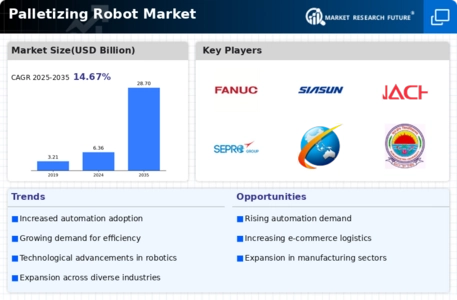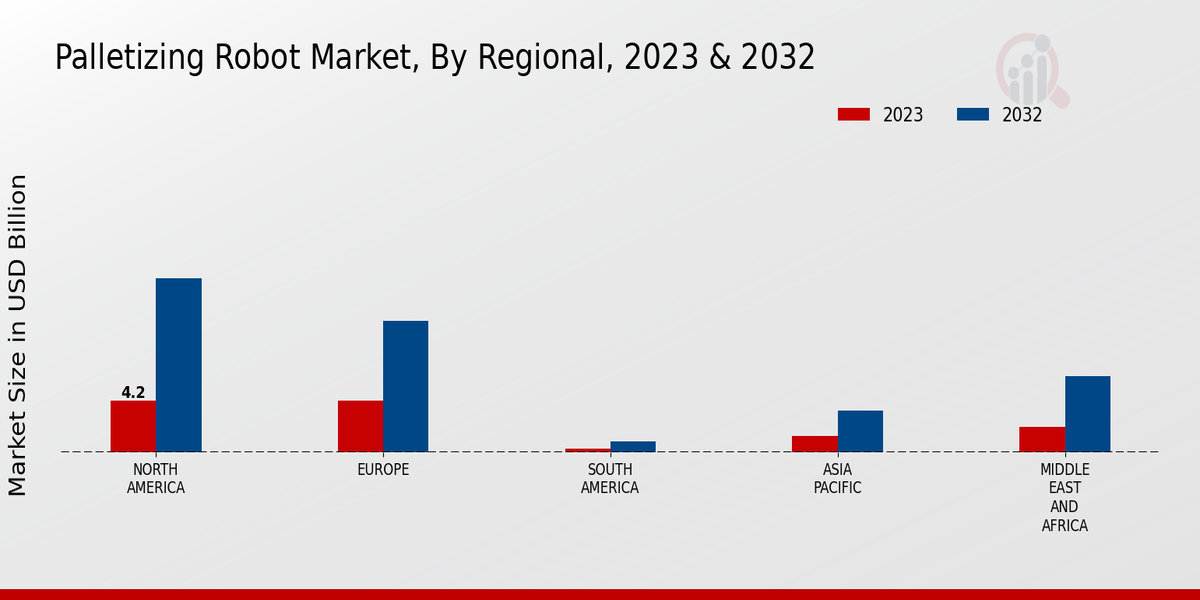Main palletizing robot market players are becoming obsessed with gaining a competitive edge over other contenders. Market leaders place their bets on the development of innovative products and the widening of their global presence. The primary trend of the palletizing robot market competitive landscape includes tough rivalry with the market’s main players investing in research and development. At the same time, the industry is characterized by multiple partnerships and collaborations to strengthen the position on the contact and acquire new technologies.
The Palletizing robot market making has been driven by a growing request for automation and efficiency in multiple end-use industries. Far-reaching innovations, such as artificial intelligence and machine learning, have made palletizing robots develop into more sophisticated and able to perform an extended range of tasks. Thus, the Palletizing Robot Market Competitive Landscape is expected to remain highly competitive.Description of the players.ABB is one of the most prominent players in the palletizing robot market, which provides various robots developed for palletizing processes and beyond.
The strongest benefits of the company’s products include high precision, speed, and reliability. ABB has an extensive base of loyal customers and a growing number of expert clients. The distribution network of the company is also significant. Therefore, the authority has the possibility to provide support and services to customers worldwide. Additionally, ABB has a flawless reputation for its commitment to innovation and the efficient development of new, high-quality products.
Another robust player in the palletizing robot market is Feanuc, which is known for producing high-quality and innovative palletizing robots. The company’s products are designed to meet the ultimate goals of efficiency and productivity associated with multiple packaging and palletizing applications. Feanuc has a significant number of customers and a wide range of available products and services. The company realizes the necessity to stay on top of the innovative rivalry and satisfy customer needs. This is why the available products are of the highest quality.
The distribution network and customer support are also beneficial, making Feanuc a robust palletizing robot producer.













